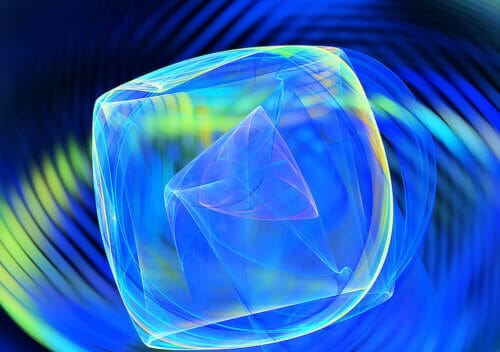In a joint study by researchers from Germany and Poland, a time crystal in action was filmed for the first time. The micrometer crystal consists of mechanisms at room temperature. Using X-rays, the researchers from Berlin recorded the magnetization of the crystal over time and recorded its cyclic behavior

The theoretical crystal turns out to be possible
A crystal is synonymous with a solid composed of atoms arranged cyclically in space. If you look at the crystals through the microscope, you can see a periodic pattern that fills the material. In 2012, the winner of the Nobel Prize in Physics Frank Wilczek (who won for the description of the strong force together with David Gross and David Pulitzer) asked whether it is possible to build a periodic crystal in space-time, that is, a lattice that appears periodic not only in fixed spatial segments, but also in fixed time segments. When Frank described the time crystal for the first time he thought of some hypothetical structures that do not exist in nature, but not long has passed since the first time crystal was assembled in 2017, which was nanometer in size at a temperature of minus 250 degrees Celsius.
Why did Frank think that time crystals do not exist in nature? In order to deeply understand Wilchek's doubt, we will devote a few sentences to crystals in nature. Naturally occurring crystals are in a state of thermodynamic equilibrium, meaning that the atoms that make up the crystal behave identically at every moment. Atoms can move, but only in a random motion, one that cannot distinguish between events on the timeline. Unlike natural crystals, a time-crystal breaks temporal symmetry even in an equilibrium state. This is a well-known phenomenon in quantum mechanics described under the umbrella of "spontaneous breaking of symmetry". That is, the laws of nature are symmetrical in time, but matter chooses a physical state that breaks the continuous temporal symmetry, one that allows it to change its structure over time. The idea sounded absurd at the time, because it is contrary to the principle of energy conservation in systems in equilibrium, but in 2015 researchers from Berkeley and Tokyo published an article that bridges the gap and enables the creation of a time crystal as long as energy is fed into it.
Time crystal is stable at room temperature
In an article published in the prestigious journal Physical Review Letters, researchers from Germany and Poland succeeded in building a micrometer-sized time crystal at room temperature. This is a significant leap since the last famous attempt in 2017. The crystal described in the last article is made up of half-spin particles located at fixed distances from each other. The particles change their spin direction cyclically (thus creating the "magnons" - quasi-particles that move as "spin waves") and with the help of X-ray radiation the group in Berlin was able to screen the process. In an experiment conducted in Germany, researchers placed magnetic tape over a microscopic antenna through which radio waves were transmitted. These waves created a periodic magnetic field and provided the energy needed to excite mechanisms in the magnetic material. Unlike classical standing waves, the waves were created as a result of quantum effects of interweaving between the particles of matter. A clear evidence of this is that the mechanisms appeared faster than the time it would have taken if the mechanism was completely classical.
The researchers were surprised to find out how stable the crystal is, even if it is not isolated from the environment. "We built a cyclic system of magnons in space and time, we introduced more magnons into the system and as a result they dispersed. We showed for the first time that the crystal can respond to quasi-particles. No one has shown this in the past, certainly not scripted the process," explained Nick Trager, a doctoral student at the Max Planck Institute and one of the authors of the article.
Gisela Schutz, director of the Institute for Smart Systems at the Max Planck Institute, explains that "the wavefronts were observed with a higher resolution than expected, 20 times more than any light microscope on the market. The method developed to view the crystal can take 40 billion pictures per second with a very high sensitivity to the magnetic fields." "We could observe a crystal of significantly higher quality than those previously observed," adds Pavel Gruski, a scientist from the Adam Michael Institute of Physics at the University of Poznań. "Our time crystal can react at room temperature to quasi-particles and maintain its properties, unlike those previously built in an isolated environment. We can finally use time crystals for future technologies."
to read the article Full
More on the subject on the science website:

6 תגובות
Time is only one of the four spaces
Time consists of three dimensions
Well, they heard that the genius bombed here is crazy, for God's sake, it's amazing how far you can go in Gaza
Sachtein
Star of David - there are pyramids around a honeycomb cell. The violation in Tiberias on 30-10-2018 was caused by
The collision of Moshe Atar from Psagot with Lauren Ankri from Gibeon new the two and a half years of Bilbol
Noush Bel Shatzer [Shatzer in Yiddish - treasure keeper] and now Cyrus will come to liberate and build a temple.
A little old informer, well, that's what it is.
Those who want to understand through Abraham's six sons with incense - there are people who find this way easy.
But what is a time crystal? (beyond a cool name)
Voice!